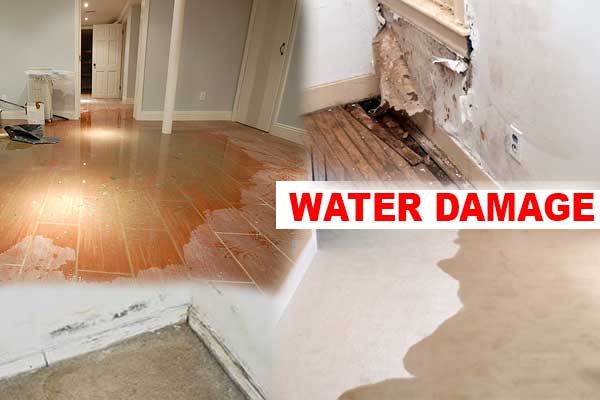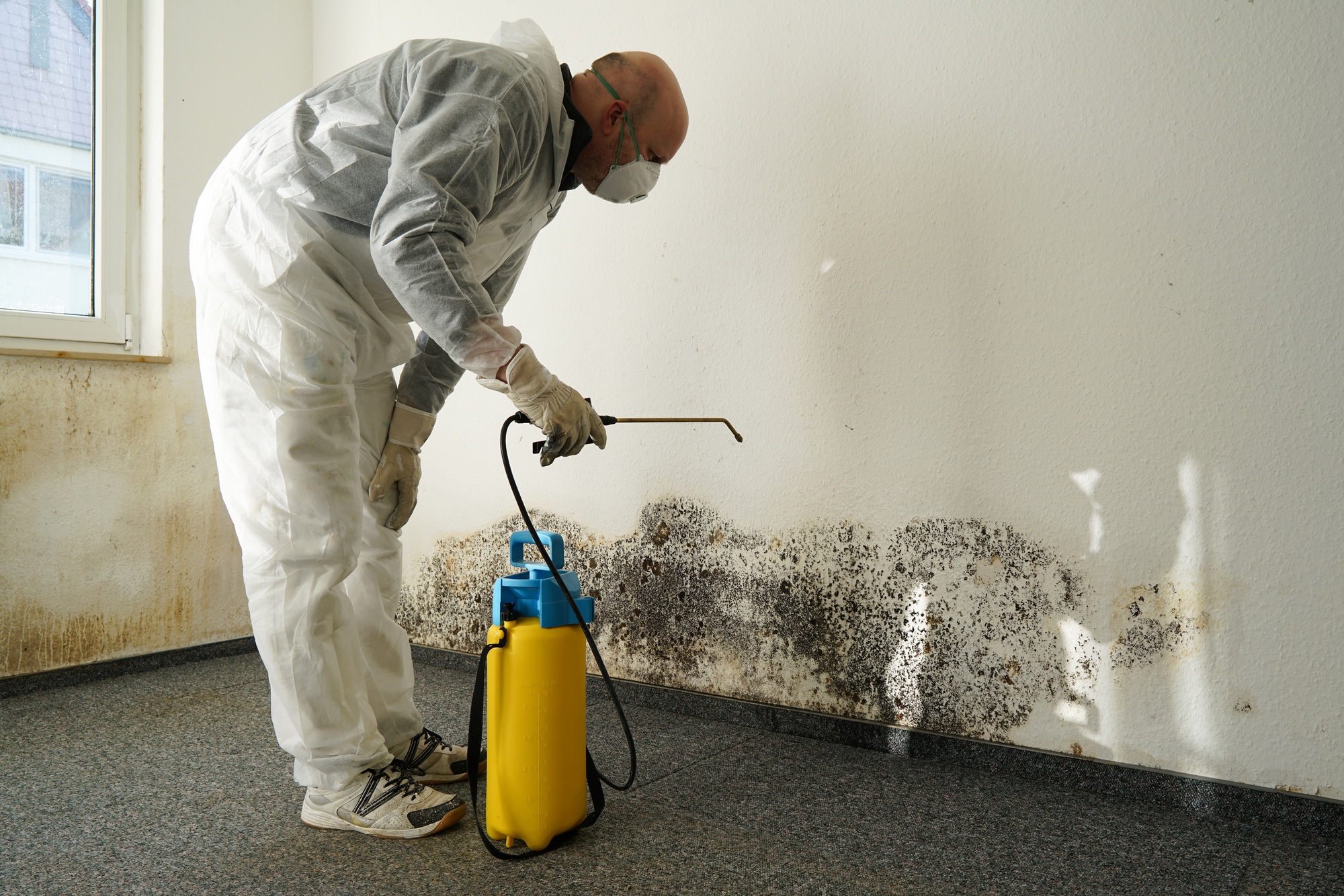Water Damage Restoration Specialists Ready to Fix Any Issue Fast
Water Damage Restoration Specialists Ready to Fix Any Issue Fast
Blog Article
The Process of Water Damage Clean-up: Guaranteeing Your Home Is Brought Back Successfully
Water damages can be a difficult obstacle for home owners, necessitating a careful and structured cleanup process to bring back safety and capability. Initially, a comprehensive evaluation is critical to identify the extent of the damages and identify the appropriate removal measures. Following this, effective water extraction techniques play a critical function in alleviating further harm. The nuances of drying, sterilizing, and ultimate reconstruction are equally crucial and usually overlooked. Comprehending these phases can make a considerable difference in the result of your home's remediation, motivating a closer appearance at what each step entails.
Analyzing the Damage
Upon finding water damage, the very first step is to completely evaluate the extent of the influence. This first examination is vital, as it aids identify the necessary steps for reliable cleaning and remediation. Begin by inspecting the influenced locations, including wall surfaces, ceilings, floorings, and individual belongings, to recognize the resource of the water invasion, whether from flooding, leaks, or condensation.
Recording the damage is crucial for both insurance coverage claims and planning repair efforts - damage restoration services. Usage photographs and written notes to capture the intensity of the damage, keeping in mind any afflicted structural elements and products. Pay unique attention to locations that may not be immediately visible, such as behind walls and under rugs, as concealed moisture can cause additional complications, including mold and mildew growth
Additionally, analyze the timeline of the water exposure. The longer the products continue to be wet, the better the capacity for damage. Recognizing the duration of direct exposure will inform the necessity of removal efforts. Eventually, a thorough evaluation prepares for a successful water damages clean-up procedure, making sure that all affected areas are resolved properly and completely.
Water Removal Strategies

Experts usually use submersible pumps for larger quantities of water, which can quickly ease flooding in cellars or other impacted areas. For smaller sized quantities, wet/dry vacuum cleaners are frequently used to remove recurring wetness from carpetings and difficult surface areas. In addition, using portable extractors enables targeted removal in confined spaces or locations with fragile products.
In instances of polluted water, such as sewage or floodwater, advanced removal strategies might involve making use of biohazard devices to ensure security and compliance with health guidelines. High-powered extraction tools are crucial in minimizing water retention in architectural products, which can result in mold and mildew development and structural degeneration if not dealt with promptly.
Inevitably, the effectiveness of water removal strategies plays an essential role in the total success of the water damage clean-up process, preparing for succeeding reconstruction efforts.
Drying and Dehumidification
When standing water has been properly drawn out, the following vital stage in the water damages clean-up process is drying out and dehumidification. This action is necessary to protect against further damage and mold growth, which can take place within 24 to 48 hours in damp environments.
To achieve reliable drying, specialized tools such as industrial-grade air moving companies and dehumidifiers is employed. click resources Air movers circulate air across damp surface areas, boosting dissipation prices, while dehumidifiers decrease moisture degrees airborne, promoting a helpful atmosphere for drying out. The mix of these devices makes certain that moisture is extracted from floorings, walls, and furnishings, allowing them to completely dry extensively.
It is crucial to check the drying out procedure closely. Specialists frequently make use of wetness meters to evaluate the wetness content in various products, ensuring that all affected areas get to appropriate dryness levels. This careful method aids to avoid covert moisture pockets that can result in structural damage or undesirable mold and mildew development.

Cleansing and Sterilizing
After the drying and dehumidification stage is full, the next crucial step in water damages cleaning is cleansing and sterilizing the influenced areas. This process is critical to stop the growth of mold, microorganisms, and other pathogens that grow in moist atmospheres.
The cleansing stage commonly entails eliminating any kind of debris, dirt, and contaminants from surfaces making use of specialized cleaning up agents. For tough surfaces, a combination of soap and water or business cleaning products is usually used. Soft products, such as upholstery and carpetings, may need much more extensive cleaning techniques, consisting of vapor cleansing or deep extraction techniques, to guarantee detailed hygiene.

Disinfecting follows cleansing, using EPA-approved disinfectants to eliminate damaging bacteria. This step is necessary, particularly in locations that might have come right into call with floodwaters or sewer, as these resources can position major wellness threats.
Furthermore, it is essential to attend to any remaining smells, which might call for the use of smell neutralizers or innovative techniques like ozone treatment. Appropriate cleansing and disinfecting click reference not only recover the safety and security and health of your home yet additionally prepared for effective reconstruction and repairs in succeeding phases of the water damage cleanup process.
Restoration and Repair Work

When the assessment is full, remediation efforts can begin. This typically involves fixing or changing damaged products, ensuring that all job abides with local structure codes and standards. If drywall has actually been compromised, it will certainly need to be removed and changed with brand-new material. In addition, floor covering might call for similar interest, relying on the degree of water exposure.
It is vital to involve seasoned restoration specialists throughout this process, as they possess the experience to handle intricate fixings effectively. They can help minimize possible future issues, such as mold and mildew development or architectural instability, thus making certain a risk-free and habitable living setting. Eventually, efficient restoration and repair work bring back the home's integrity and boost its total worth.
Verdict
In conclusion, the process of water damage cleanup is critical for bring back a home to its pre-damage condition. Each phase, from analyzing the damage to executing efficient water extraction methods, adhered to by thorough drying out, sanitizing, and necessary repair work, plays a crucial function in making sure safety and security and conformity with building straight from the source requirements. Reliable implementation of these steps not just alleviates prompt damage however additionally enhances the long-lasting integrity and value of the property.
Water damage can be a challenging obstacle for home owners, demanding a careful and structured cleanup procedure to bring back safety and performance. Eventually, an extensive evaluation lays the groundwork for an effective water damages clean-up process, ensuring that all influenced locations are attended to efficiently and completely.
Effective water removal techniques are essential in minimizing damages and avoiding additional problems complying with a water invasion occasion.In conclusion, the procedure of water damage clean-up is essential for bring back a home to its pre-damage problem. Each phase, from evaluating the damages to applying efficient water removal methods, followed by detailed drying out, sterilizing, and required repair services, plays a vital function in guaranteeing safety and security and conformity with building requirements.
Report this page